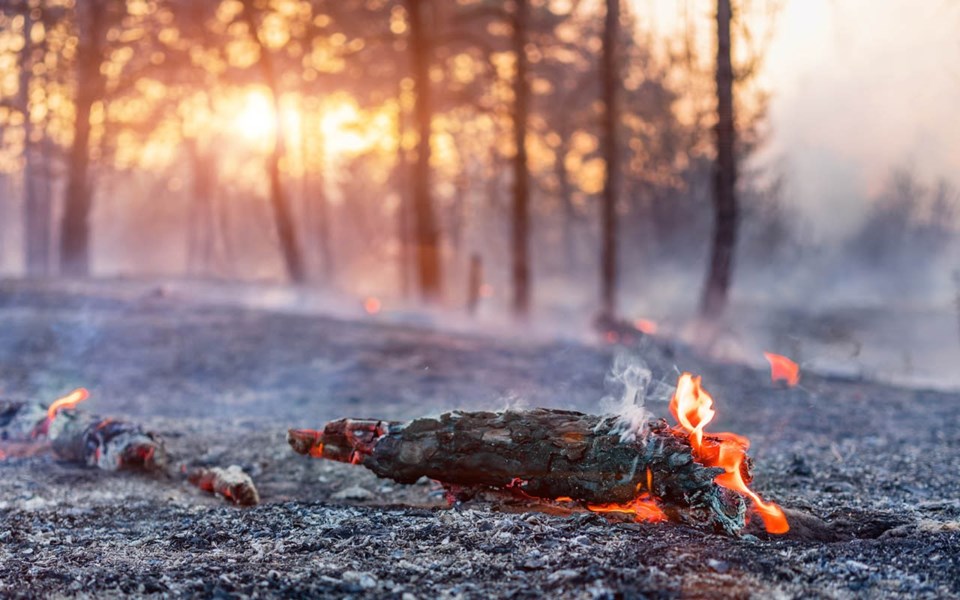California's Camp and Woolsey fires put the electrical infrastructure upon which all mountain communities depend into vivid focus. A central question has been what value should be assigned to the benefits of putting transmission and other electrical lines underground.
Investigators had still not determined by Monday, Nov.19 what caused the two fires. However, The Guardian reported on Nov. 17 that the California Public Utilities Commission said it received reports from two utilities showing equipment issues occurred in areas close to where the fires ignited in the moments before flames began to spread.
On Monday, the Sacramento Bee reported that Pacific Gas & Electric had informed the PUC of a high-voltage outage in an area just a few minutes prior to the first reports of flames that quickly became the Camp Fire. The Guardian on Saturday said a utility had also reported problems about the time the fire near Los Angeles erupted and in the same vicinity.
A spokeswoman for the Utility Reform Network, a California advocacy group, pointed to a record of problems. "We don't know yet if PG&E (Pacific Gas & Electric) is responsible for the Camp Fire," Mindy Spatt told The Guardian. "But we know there is a pattern there, and it is a pattern that is costing consumers potentially billions of dollars (in liability payouts) and costing lives as well."
Several mountain towns in the Rockies have been talking about alternative delivery of electricity to improve resilience. Cost of putting lines underground has been part of the discussion.
In the Vail area, Holy Cross Energy proposes a new 115-kilovolt transmission line between a substation at Gilman, a now-abandoned mining town, and Avon, at the foot of Beaver Creek. The new transmission line would make the communities along Interstate 70 in what is commonly called the Vail Valley less vulnerable to risk of wildfire, equipment failure, or even sabotage.
Holy Cross has been working on creating that redundancy for two years, but the risk of wildfire was highlighted in July when a small fire temporarily threatened the main power lines along I-70. In response, the local water district ordered a ban on all-outdoor watering. Without electricity, it has enough water to last for only a couple of days.
Just days before, a far bigger fire had threatened to put Aspen and Snowmass in the dark for the July Fourth weekend. The Lake Christine Fire that was started on July 3 by target shooters at a range near Basalt burned three of four power lines used by Holy Cross Energy to Aspen. The fire was about 32 kilometres down valley from Aspen. Had the fourth and final line gone down, Aspen would have been without power for several days. Repair crews cannot go into a fire area until it has been fully contained.
The two fires illustrate just how vulnerable mountain resort towns can be, due to their often tortured if wondrously scenic geography. Telluride illustrates the vulnerabilities even better.
Twice in this century, Telluride has lost power during ski season when transmission lines were damaged. The primary transmission line comes from the south, over Ophir Pass. In 2004, a snow slide took out one of those transmission lines. Telluride and Mountain Village, including the ski area, had three days of reduced power and rolling blackouts during the height of ski season.
In response, a new 82-kilometre backup power line was completed in 2013. The US$56 million line comes from the west, in the Nucla area. The negotiations were protracted, involved lengthy hearings before the Colorado Public Utilities Commission, and a court case. The primary issue was the cost of undergrounding a 16-kilometre segment through calendar-worthy Wilson and Specie mesas. Some of the most expensive real estate in the Telluride area is located there.
The US$19 million cost of undergrounding was paid in part by homeowners of the high-priced homes on the mesas but also the two towns, San Miguel County, and both the wholesale provider, Tri-State Generation & Transmission, and the distribution co-operative, San Miguel Power. Customers of the co-op are being charged via a surcharge over a 30-year period.
Art Goodtimes, then a San Miguel County commissioner, believes that undergrounding should be considered in the context of avoided cost. Underground lines pose less risk of causing wildfires. "If you're really serious about (mitigating) wildfire risk, undergrounding makes sense if you consider the avoided costs, the dollars and cents, of containing wildfires," he said.
Even so, Telluride, however, still did not have full redundancy. On Presidents' Day Weekend in 2017, a refrigerator-sized boulder tumbled 244 metres and struck a power-line pole. A comedy festival at the Sheridan Opera House in Telluride had to be finished in candlelight and a local grocery unloaded frozen goods at a discount.
That last-kilometre redundancy has since been addressed by the local San Miguel Power Association.
Underground lines always cost more. A May story in The Atlantic cited a 2012 study by the Edison Electric Institute that found underground lines had fewer problems during storms and were better for public safety all around. But the cost, said the article, starts at US$1 million a mile (1.6 kilometres). In mountainous areas, it's much higher yet. Even the lower figure is five-to-10 times what it costs to hang a line overhead.
This added cost can make undergrounding prohibitively expensive. The magazine cited a plan in North Carolina to put lines underground that was dropped. It would have caused electrical rates to rise 125 per cent.
In Minturn, Holy Cross has indicated willingness to bury 2.7 kilometres of the 14-kilometre line. That would put it out of sight in most of Minturn, but not all. Minturn wants more undergrounding.
"Certainly Minturn wants to support redundancy in the system. We get it. We just love the idea of undergrounding for a variety of reasons," said Michelle Metteer, the town manager.
There's also the question of equity. Holy Cross has buried distribution lines in Snowmass Village, as was pointed out by Minturn resident Lynn Feiger in an op-ed published in the Vail Daily during September. Why, she seemed to ask, would it treat the Minturn area any differently?
As for Aspen, Holy Cross has been talking about distributed generation coupled with battery storage as one option for making the community's electricity supply less vulnerable to wildland fires.
In Idaho, a similar discussion is underway. There, the path for a second transmission line to the Ketchum-Sun Valley area has been identified, but not the details. Undergrounding is among the options, but at an additional cost that Idaho Power estimates at US$34.5 million. The Idaho Mountain Express reported several financing options, none of them inviting or easy.
His favourite peaks
SILVERTHORNE, Colo.—Colorado's Summit County has three peaks along its border that surpass 4,267 metres in elevation. But they're far from the most difficult peaks in the mountain-ringed county, as Gary Fondl ascertained in his quest to climb the county's 101 highest mountains.
Few people have heard of the peak that Fondl favoured most: Peak L, in the Gore Range. It stands 4,027 metres, and it's remote. "We did it in a day hike, and it took 17 hours," he told the Summit Daily News. "And, man, it's just a beautiful piece of rock. That's a long day on your feet, but when you reach that summit, it's a beautiful summit. The rock quality is as beautiful as the view."
Fondl formulated his goal in late 2011 and wrapped it up in early October. His last mountain was also the lowest, a 2,871-metre summit that is the namesake for Green Mountain Reservoir. Unlike the well-travelled peaks over 4,267 metres, there was no trail to the summit.
Electric cars continue to move toward mainstream
DURANGO, Colo.—It's 257 kilometres from Durango to Moab, Utah, a journey that includes some of the most uninhabited country in the United States. But it's a trip that can now be done easily in an electric car.
Electric charging stations continue to proliferate. There are at least a couple of charging stations between the two towns, and Moab itself has a fast-charger.
But newer electric cars have batteries able to go longer distances. The third generation of General Motors' Leaf, for example, can travel 386 kilometres in warmer weather on a single charge.
However, there are limits, as was pointed out by the Durango Herald. There are not charging stations along unpaved backcountry roads. Nor are there electric motors for off-road or four-wheel-drive vehicles, at least not until next year. Several manufacturers plan to deliver electric four-wheel-drive SUVs.
"Analysts have long said one of the main things electric cars need to make the transition from early adopters to mainstream cars is more choices," noted Green Car Reports in a July posting. "With at least four and as many as nine new electric SUVs coming in the next year and a half, 2019 is gearing up to be the year of the electric SUV."




